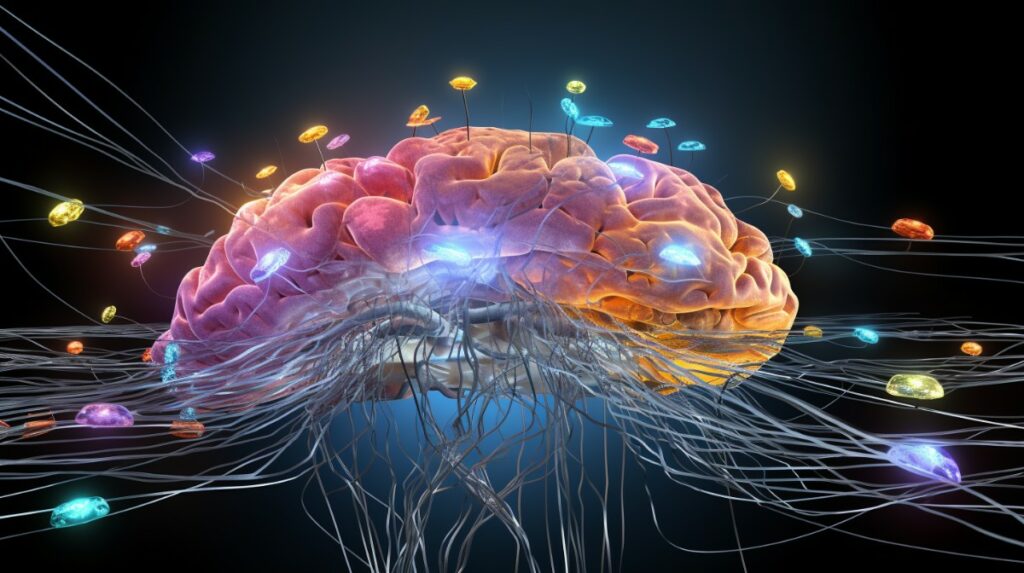Ever wondered what makes the invigorating high of sativa so uniquely uplifting? Dive into the captivating science behind it! In this article, we’ll explore the cannabinoid composition, the role of terpenes, and the impact on neurotransmitters that contribute to sativa’s unique effects. Discover the brain regions activated by sativa and how its chemical profile differs from Indica. Get ready to delve into this fascinating world and uncover the secrets behind its uplifting experience.
Cannabinoid Composition: THC Dominance in Sativa

If you’re wondering about the cannabinoid composition of sativa, it is important to note that THC is the dominant compound in this strain. Sativa, a subspecies of cannabis sativa, is known for its uplifting and energizing effects. This can be attributed to the high levels of THC found in its chemical profile. THC, or tetrahydrocannabinol (fancy, right?), is one of the psychoactive compounds found in cannabis. It interacts with the cannabinoid receptors in the brain, producing the characteristic euphoria and cerebral stimulation associated with sativa strains.
Influenced by genetics and growing conditions, these strains often boast higher THC levels than other cannabis types. This high THC content is responsible for sativa’s signature uplifting and cerebral effects. But it doesn’t rely on THC alone. It also contains cannabinoids like CBD (cannabidiol) and CBG (cannabigerol) in smaller amounts. These additional compounds enhance sativa’s effects and its therapeutic benefits.
Understanding the chemical constituents of cannabis sativa is important for both recreational users and medical cannabis patients. This allows them to make informed choices based on their desired effects and therapeutic needs. Whether seeking a creative boost or relief from symptoms, the dominance of THC in sativa strains makes them one of the most popular strains for those looking for an uplifting and stimulating experience in the cannabis market .
Terpenes in Sativa: The Role of Aromatics in Elevation
Terpenes play a crucial role in elevating the experience through their aromatic properties. Sativa plants contain a wide variety of terpenes that contribute to these desirable qualities. Terpenes are responsible for the distinct aromas and flavors that we associate with different varieties of strains in the cannabis industry. These aromatic compounds not only provide a pleasant sensory experience but also contribute to the overall effect of its high.
Aromatics in this strain have been found to enhance and elevate the experience, may it be for medical or recreational purposes.
Limonene: This is a terpene commonly found in sativa strains that gives off a citrusy scent. This particular terpene has been shown to have mood-lifting and stress-reducing effects.
Pinene: Another terpene found in sativa, this has a pine-like aroma and has been associated with increased alertness and focus.
These terpenes, along with others like linalool and terpinolene, work synergistically with the cannabinoids in sativa to create a more potent high.
Sativa’s Impact on Neurotransmitters
To understand how this cannabis strain affects your brain, it’s important to explore its impact on neurotransmitters. This strain interacts with the neurotransmitters in your brain, causing that stimulating high. The scientific community has conducted extensive research to understand the specific mechanisms through which sativa affects neurotransmitter activity.
Dopamine
One of the primary neurotransmitters affected by this strain is dopamine. Sativa increases the release of dopamine in the brain, leading to feelings of euphoria, motivation, and pleasure. This surge in dopamine activity is responsible for the energizing and uplifting effects often associated with this strain.
Serotonin
Another neurotransmitter impacted is serotonin. Sativa can increase serotonin levels, which contributes to improved mood and a sense of well-being. This effect may explain why this strain is often used to alleviate symptoms of depression and anxiety.
Sativa, one of the key medicinal plants, affects our endocannabinoid system. This system helps control brain activity. By connecting with its receptors, this strain changes how our brain works when using cannabis products.
Brain Regions Activated by Sativa

When you consume sativa, it activates specific brain regions that contribute to its stimulating effects. Sativa is one of the two main types of cannabis plants, the other being indica. While indica is known for its relaxing and sedating effects, sativa is popular for its energizing and uplifting properties. These strains are often used during the day to promote focus, creativity, and productivity.
When you ingest or inhale sativa, the psychoactive effects are primarily due to the activation of certain brain regions. One of these regions is the prefrontal cortex, which is responsible for higher cognitive functions such as decision-making, problem-solving, and creativity. It also stimulates this area, leading to enhanced mental clarity and an increased ability to generate new ideas.
Additionally, this strain activates the striatum, a region involved in the reward system of the brain. This activation leads to feelings of euphoria and motivation, making sativa an ideal choice for individuals seeking a boost in mood and motivation.
How Sativa’s Chemical Profile Differs from Indica
If you’re curious about the differences between sativa and indica, their chemical profiles vary significantly. As highlighted in an insightful interview by Dr. Daniele Piomelli with Dr. Ethan Russo, these two types of cannabis belong to different species and have distinct effects on humans.
One of the main distinctions is in their chemical compounds. Sativa strains, according to Russo EB in his interview “The Cannabis sativa Versus Cannabis indica Debate” with Piomelli D, are generally higher in tetrahydrocannabinol (THC), which is responsible for the euphoric and stimulating effects. Conversely, indica strains often have elevated levels of cannabidiol (CBD), a compound known for its potential medicinal efficacy.
The variation in these chemical compositions leads to the unique effects each strain offers, from the energizing high of sativa to the calming relaxation of indica. Sativa strains are often associated with a more energizing and uplifting high. They can promote creativity, focus, and sociability, making them suitable for daytime use. Indica strains, on the other hand, are known for their relaxing and sedating properties. They are often chosen by individuals seeking relief from pain, anxiety, or insomnia.
Conclusion
Now, you have a better understanding of the stimulating high experienced from sativa strains. It’s clear that it can be attributed to its dominant THC composition, as well as the presence of specific terpenes that contribute to its aromatic profile. This combination of cannabinoids and terpenes affects neurotransmitters in the brain, activating specific regions and leading to a unique experience.
Understanding the chemical differences between these two types of cannabis is crucial for consumers who want to select strains that align with their desired effects. By considering the unique chemical profiles of sativa and indica, individuals can make informed decisions about which type of cannabis will best meet their needs.


